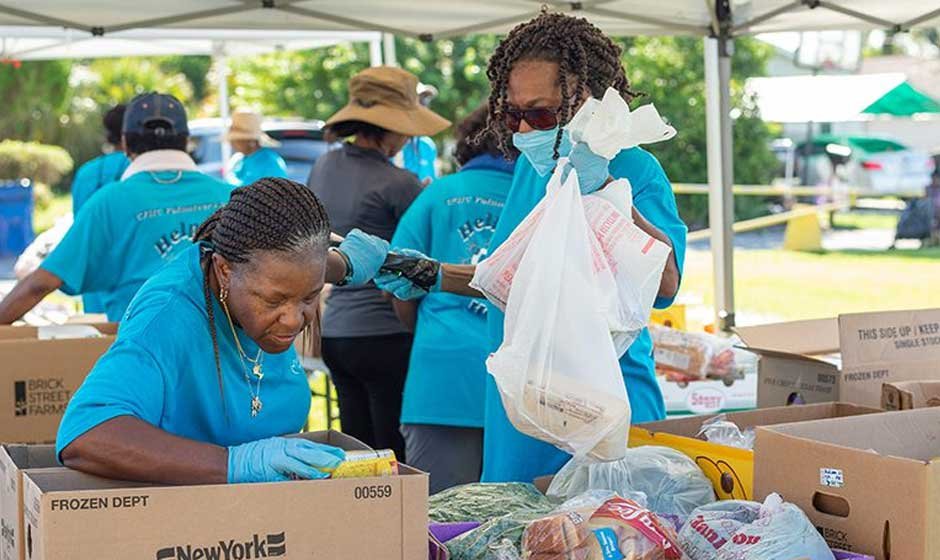Child hunger is an issue that often goes unnoticed. In a lot of communities, kids go to bed without dinner or show up at school without breakfast. This improper nutrition can really hamper their ability to concentrate, develop, and accomplish. While the problem is serious, it’s not unbeatable.
With constant community action and awareness, change is sure to happen. From volunteering with local programs to word of mouth, every action matters. One of the easiest ways you can contribute is to assist families find free meals near you. Local meal programs are often available in all areas, but families may not be aware of where or how to find them. Sharing this information, either by word of mouth, community bulletin boards, or social media, ensures more kids get the meals they need. Furthermore, here are some practical ways in which you can help end child hunger in your neighborhood. Read on!
Donate and Fundraise to Support Local Efforts
Most community programs that combat child hunger are dependent to a great extent on volunteer donations and fundraising to maintain their operations. Donations of money assist in paying for food, transportation, machinery, and personnel to prepare and serve meals. Small gifts can amount to thousands of meals in the long run.
Organizing fundraising activities is another method of making a difference. Bake sales, charity runs, or internet crowdfunding drives are some ideas that bring people together for a good cause. Local businesses might even be interested in sponsoring events or doubling donations, effectively doubling the impact.
Support School Meal Programs
Schools are not only places of learning, but sources of sustenance. Most children rely on free or reduced-price meals served during school hours. Sometimes these efforts extend to breakfast and lunch, and sometimes weekends are supplied through take-home offerings.
Volunteering during lunch times or helping to raise money for equipment and supplies are good efforts to make. Advocacy is another avenue. School board members and district officials typically decide the success of food programs, and constituent pressure can help make the decision. Writing letters or testifying at meetings can keep child nutrition a priority.
Support Summer and After-School Feeding Programs
Summer is the toughest part of the year for families who are hungry. To battle this, summer feeding programs provide children meals during the school break. These are usually held at schools, libraries, parks, or community centers.
After-school programs serve meals or snacks to make sure children have something to eat before leaving. Programs may also include tutoring or recreation, offering safe and caring environments for children. Volunteers might be asked to help prepare and serve meals, supervise children, or run programs. Educating families about programs raises participation rates and avoids food waste.
Advocate for Policy Change
Policies greatly influence who has access to food. Federal and state programs like SNAP (Supplemental Nutrition Assistance Program), WIC (Women, Infants, and Children), and funding for school meal programs are reliant upon legislation. Staying informed about these policies and speaking up when proposed changes take place ensures that access for those in need remains upheld.
Joining a local or national campaign, writing letters or petitions, or contacting elected officials are excellent means of expressing your voice. There are numerous organizations that offer tools that make it easy to act, such as sample appeals or notifications of upcoming votes. No matter how insignificant it might appear, every step forward can result in greater change. The louder the voices being heard, the more lawmakers listen. This aids in maintaining and expanding critical child and family food programs.
Partner with Local Organizations
Most areas have nonprofit organizations and grassroots groups that aim to end childhood hunger. These groups tend to understand where the help is most needed and how to have the greatest effect. Working with them maximizes their efforts and establishes a network of support. Opportunities you get may include hosting a food drive, sponsoring a meal event, or helping with outreach.
Certain groups also provide food education, teaching families about cooking nutritious meals within a limited budget. The workshops can improve long-term food security. Establishing partnerships also bridge service gaps. For example, if meal programs do not exist in a given area, neighborhood residents will come together to create one. Collaboration generates new ideas that serve more children better.
It takes a community-wide effort to end child hunger. Big policies and programs are necessary, but community action is where the movement begins. Volunteer time, raise awareness, and support local efforts all help create stronger futures for kids. Everyone can start by helping families find free meals near you. It is an easy step that connects children to direct assistance and lets parents know they’re not alone.












